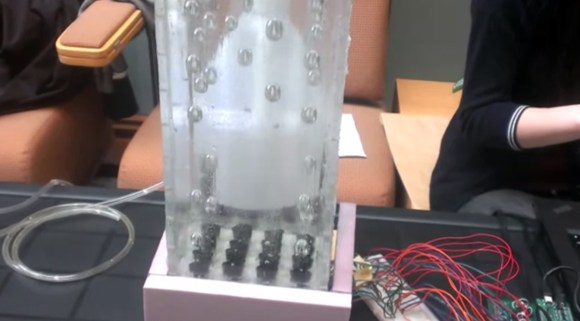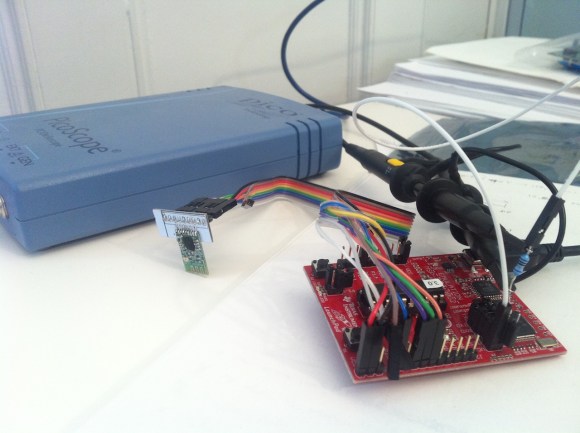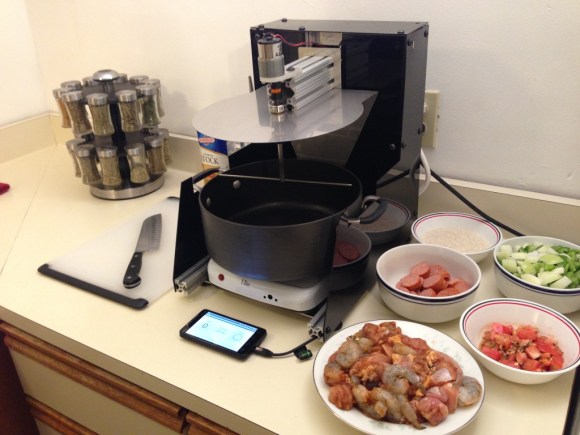
[Craig Shultz], a mechatronics grad student at Northwestern University, sent us a video of his group’s project from last winter: a 3D bubble display. We’ve seen some pretty impressive and innovative bubble displays around here—most recently the 60-tube RGB LED build—but [Craig’s] is the first we’ve seen that adds some depth to the project.
For the most part, its construction is what you’d expect: an acrylic case enclosing the 4×4 arrangement of tubes, 16 valves 16 individually controlled solenoids, and some small air pumps; all driven by a PIC microcontroller. In the video, however, you’ll have to strain your eyes if you want to see the tubes, which is a clever design choice on [Craig’s] part to showcase the display’s depth. Each of the bubbles was visually separated by pairing glycerin with a tubing material that had a similar index of refraction, Pyrex. As a result, the tubes blend seamlessly into the fluid. Check out the video after the break.


 [Trandi] can check ‘build a self-balancing robot’ off of his to-do list. Over a couple of weekends,
[Trandi] can check ‘build a self-balancing robot’ off of his to-do list. Over a couple of weekends, 













